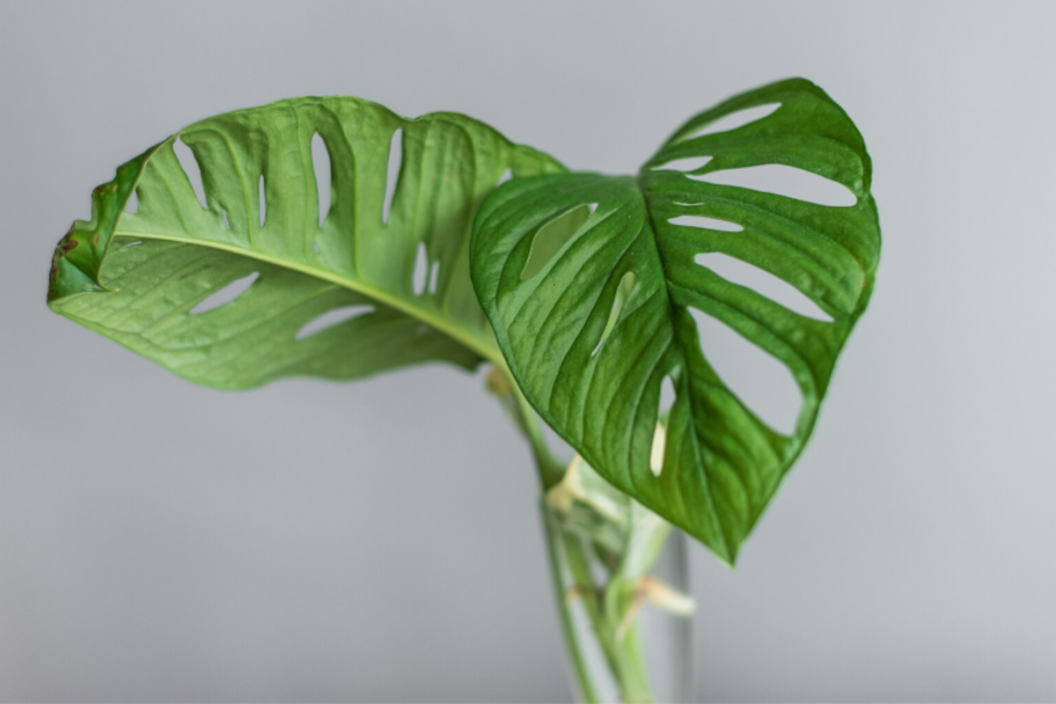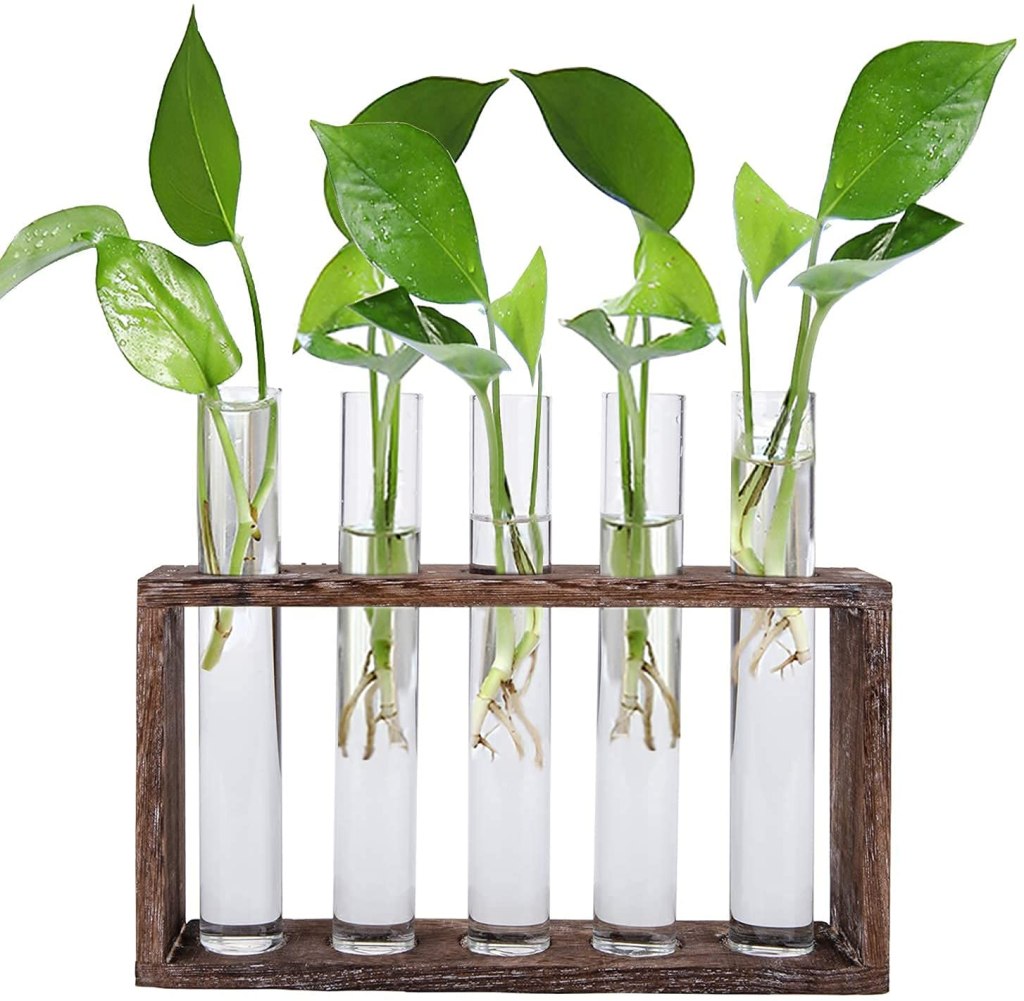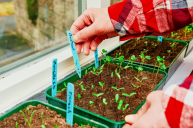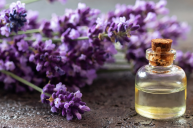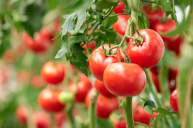Growing a garden is a fantastic way to add some fresh touches to your life every day, either through a quick dash of herbs to a meal or fresh flowers on the table. Starting an herb garden, though, can be expensive if you go out and buy all new plants. The good news is that it doesn't have to be expensive, or even difficult, to start your own garden by growing plants from cuttings. We've got a list of plants that grow from cuttings to make it easy on you to get started.
Videos by Wide Open Country
It's possible to propagate, or grow, many herbs and plants from cuttings. This process basically clones the parent plant, which sounds like something out of science fiction, but all it means is that when you cut a piece off of the mother plant, that part of the plant regrows itself.
Plant cuttings that can regrow are fairly common in nature, and we're sharing some of our favorites here. Growing herbs from cuttings is easy, but you can also grow different types of cuttings, including flowering plants, houseplants and succulents.
Here is a list of plants that grow from cuttings.
Our List of Plants That Grow From Cuttings
1. Mint
Mint is another herb that will grow almost anywhere its planted. With its soft stem, you can easily regrow a mint cutting in water. Once the new cutting has grown roots, transplant it into some potting soil and watch the herb grow.
2. Sage
The best way to regrow sage is to take cuttings from a garden in the fall and pot it over winter, then repot it in spring. You can also try to grow roots in water from the leaf cuttings since it is a soft-stemmed plant.
3. Rosemary
Rosemary will take over your herb garden if given the chance, so it's a great herb to start with if you want to try and propagate a plant. You can use new growth in the spring or basal cuttings in the late fall. The greener the stem is, the easier it will be to regrow new shoots.
4. Thyme
Regrowing thyme is exactly like regrowing rosemary. The two are even close enough that you can regrow them using the same jar of water (just make sure there's plenty of room in the jar).
5. Basil
Basil is hearty and is an easy type of plant to regrow in water. It's best not to use basil that has flowered, and you'll want to take off most of the lower leaves with only the top clusters remaining.
6. Oregano
Another herb you can regrow soilless in water, make sure you remove any flowers as well as all of the leaves except the ones right on top.
7. Lavender
Cut three inches off the tip of the lavender plant. If you take the stem cuttings in the spring, you'll want to give them at least four to six weeks to grow new roots before you plant them in a garden bed. You can also take cuttings in the fall to replant in the spring.
8. Horseradish
You can regrow horseradish directly by simply dividing the root into three pieces and replanting the root cutting about a foot apart in your garden. Or you can plant it inside in moist, silty soil.
9. Geraniums
Geraniums are one flower that can be regrown in water. In fact, it's a flower you might want to start with if you're unsure about propagating plants. Make the cuttings about six inches long and make sure all the leaves are above the waterline. It takes up to a month for geraniums to complete new root growth in water.
10. Fuchsia
Take the cutting in spring and regrow it in a moist compost and sand mix, keeping the leaves covered. You can replant it that same summer and get flowers that season.
11. Hydrangea
Take about four inches off the tip of the plant. Leave two or three pairs of leaves, plant in moist rooting soil, and cover with plastic. You can cut the leaves in half to help stop moisture loss.
12. Begonia
Take a cutting about 1" to 1 ½" long, and press it gently into moistened potting soil. You can also use a mix of perlite and vermiculite. Keep the cutting in a warm, humid and well-lit spot out of direct sunlight until roots begin to form.
13. Jade plant
Take a branch about 3 to 4 inches long and let it dry. Once the cutting has dried, plant it in a potting mixture and keep it just damp until it takes root.
14. Azalea
The best time to propagate azaleas is in the spring after the leaves are mature, when the wood is somewhere between soft and brittle. Clip about 5 inches off the end of healthy branches and trim the cutting just below a point of leaf attachment. Remove the flower buds from the entire cutting and remove the leaves from the bottom third of the cutting. Dip the end in a rooting hormone and plant in potting mixture. Keep the cuttings in bright, indirect sunlight.
Regardless of what plant or herb you want to re-grow, there are a few things you need to do to manage plant propagation successfully and get healthy plants and herbs with little cost.
15. Snake Plant
Increase the number of plants by propagating your sansevieria! Simply cut a leaf from the plant and place the cut end of the leaf in the water to cover 1/4 of the leaf. Keep in indirect sunlight, changing the water every couple of days. Pretty soon you'll see little roots!
16. Pothos
Propagating a pothos is practically foolproof. Cut the leaf above the root nodes and place in water. Within a couple of days, the roots will be growing like mad.
17. African Violet
Do this project in the spring, then the new leaves are starting to pop. Remove a healthy leaf along with its stem from the base of the plant. Dip the stem into rooting hormone and place directly into the soil, watering with tepid water when needed.
18. Dracaena
Time to give your plant a haircut! Propagating a dracaena means snipping the top portion of the plant, making sure to include a few nodes. Place in moist soil or water and wait for roots to form. Meanwhile, your newly cut dracaena should grow back quickly.
19. Butterfly Bush
In the early spring or early summer simply take branch tip cuttings and place them in water. You should see some roots in a few weeks! We suggest cutting the stem at an angle for better absorption.
20. Chrysanthemum
Once these beautiful plants are finished blooming in the fall, take cuttings of healthy stems and insert them into perlite, with one or two nodes below the surface. Place in bright indirect light. The cuttings are ready to replant in a small pot when roots are 1-inch long. Wait 4-6 weeks before transferring to its permanent location outside.
The Steps of Propagating Plants From Cuttings Correctly
Step 1
Once you've picked your favorites off the list of plants that grow from cuttings, you're ready to get started. Choose a healthy part of the plant and make sure you get enough of the plant. The amount will depend on the particular herb or plant, but the general rule is to make sure you have enough for about half the plant to go in the propagation medium and half to stick up above it.
Step 2
Carefully take off the leaves on the lower half of the cutting. You can use scissors or a sharp knife, but if it's an herb like rosemary or sage, it's just as easy to pinch the leaves off with your fingers. If it's a large-leafed plant like a hydrangea, cut the leaves in half to reduce moisture loss.
Step 3
Cut the stem right below a leaf node (the area where you pinched or cut the leaves off). If the plant is one that's difficult to root, you might "wound" the stem, which just means cutting lightly on either side of the stem base. You can also dip the stem into rooting hormone to help the process along.
Step 4
Place the cut end in the correct rooting medium. For softwood cuttings with young stems like most herbs, a jar of water may be all you need. For semi-hardwood and hardwood cuttings, with tougher, woody stems, you'll need a potting mix of sand or soil. You can also grow cuttings in perlite, though once the cuttings have taken root, they'll need transplanting again to soil.
You don't need to add any kind of nutrient or fertilizer since the plant doesn't have roots yet with which to take them in, but you do need to make sure each cutting can get enough air and light, so don't crowd them. If you're working with soil or sand, make sure it's not too dense and drains water well.
Step 5
While you don't want to overwater your cutting, placing a clear plastic bag over it can help keep moisture in. Plants lose moisture through their leaves, but since they don't have roots to pull in more water, you need to help the plant retain the moisture so it grows roots. Make sure the cover is clear so the plant can get light, but keep the plant cuttings out of direct sunlight.
The plant or herb has taken root when you start to see new growth (new leaves and, of course, a new root system). Replant it gently and enjoy your new plants!
This article was originally posted on August 28, 2019.
Products featured on Wide Open Eats are independently selected by our editors. However, when you buy something through our links, we may earn a commission.
